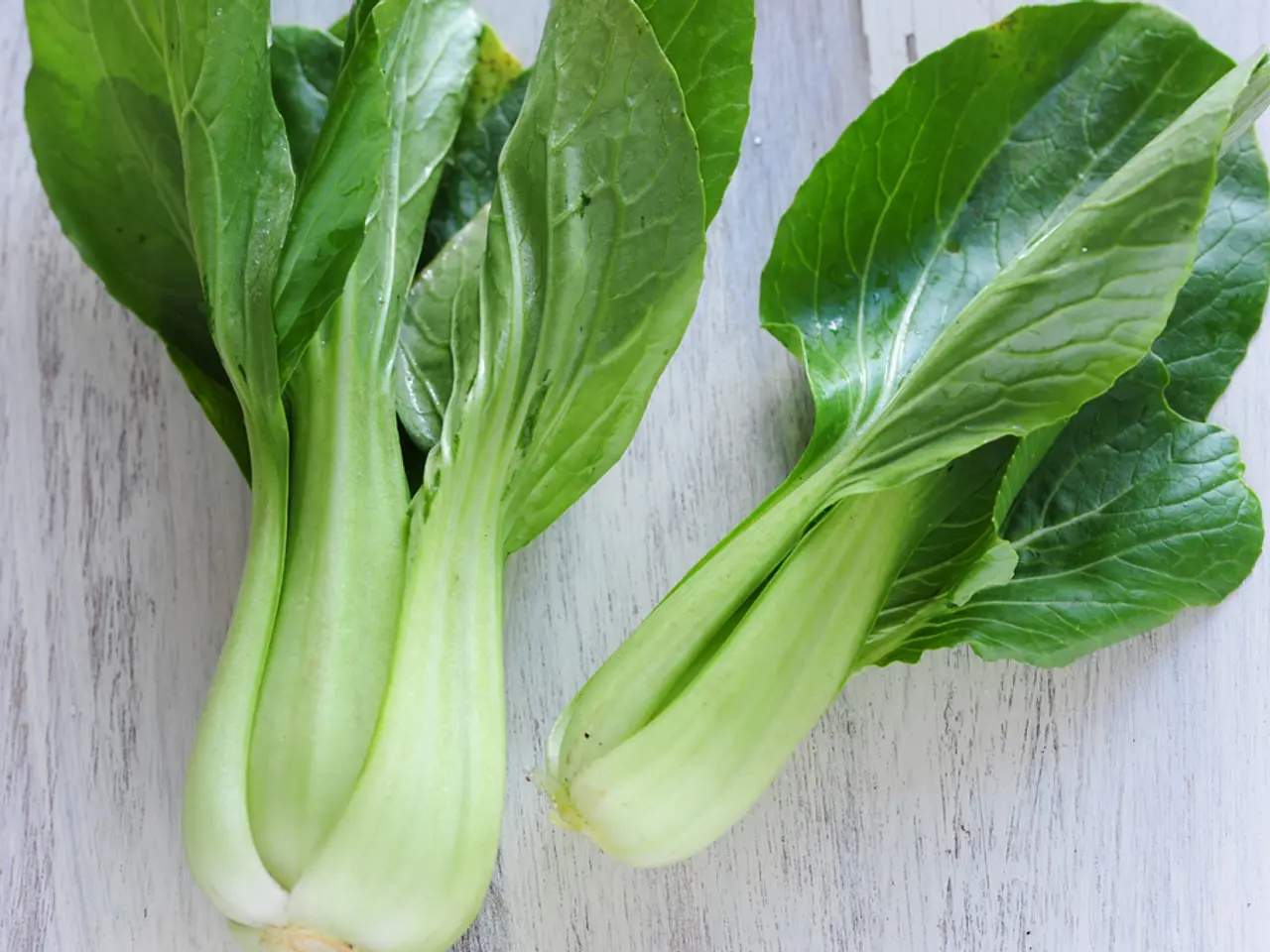August Planting Options: My Top 25 Picks
As the summer comes to an end, UK gardeners can still enjoy a bountiful harvest by sowing fast-maturing and frost-tolerant vegetables and greens in August. Here's a guide to help you make the most of your garden before the chill of winter sets in.
Radishes are a great choice for an August sowing, with varieties such as 'French Breakfast' and 'Cherry Belle' recommended. Sow them directly into well-drained soil about 1 cm deep, and you'll be able to harvest in just 3–4 weeks. For continuous harvests, sow every two weeks until early September [1].
Rocket (arugula) is another quick grower, with 'Wild Rocket' being a more resilient variety. Sow thinly 0.5 cm deep, and you'll have salad leaves ready in 4–6 weeks [1][2].
Spinach is also ideal for sowing in August, as direct sowing outdoors works best. It tolerates partial shade and is perfect for continuous cropping [2][3].
Kale, a hardy and frost-tolerant plant, is well-suited for August sowing. Sow 1/4 inch deep, 3 inches apart, and kale plants can be harvested young or mature and may tolerate mild frosts [3].
Swiss chard, pak choi, turnip, and winter radishes are also suitable for sowing in August for a fall or early winter harvest [2].
Leeks, while not immediate for a fall harvest, can be started from early August sowings for continuity into later seasons.
In the UK, sowing timing might vary. Northern regions should sow earlier in August or use protective covers to avoid frost damage, while southern areas have more flexibility due to milder conditions [1][3].
Carrots can still be sown for faster maturing crops in August, especially in areas with less reliable weather. Chinese Cabbage is fast-growing and worth growing, but should be sown in situ or in modules to minimize root disturbance when transplanting.
Chicory, both Red and Sugarloaf varieties, can be grown for leaves in August. Japanese Onions are sown now for harvest next year, usually around late May or June depending on your climate.
Lettuce can be sown for harvesting in November and December under glass or plastic, and salad onions can be sown for outdoor harvest in early spring. They can also be grown indoors for winter harvest.
Pak Choi can be harvested after 35 days, but for a heavier crop, wait until around 75 days. It is less likely to bolt at this time of year.
Lambs Lettuce (Corn Salad) is a very hardy winter salad that lasts well through the winter. Oriental Mustards are a cool weather brassica crop grown for their leaves and are frost tolerant. Varieties include Red Frills, Purple Frills, Green Wave, Red Giant, Golden Streak, Komatsuna, and others.
Mizuna can be sown outdoors or under cover in August. Parsley, coriander, basil, and chervil can be sown in seed trays now for growing indoors under glass throughout the winter.
For more gardening tips, follow StefanDrewe.substack.com. Join the How to Dig For Victory, UK Garden Flowers, Trees, Shrubs & More, and Allotment Life For Beginners Facebook groups to connect with other gardeners and share your experiences.
[1] RHS: Vegetables: Sowing, Growing, Harvesting (2nd ed.) [2] The Organic Gardener's Bible [3] The Complete Book of Fruit and Vegetable Gardening [4] Gardening for Beginners: A Practical Guide [5] The Vegetable Patch: How to Plan, Plant, and Grow Your Own Food
\n\n
Sources:
- RHS: Vegetables: Sowing, Growing, Harvesting (2nd ed.)
- The Organic Gardener's Bible
- The Complete Book of Fruit and Vegetable Gardening
- Gardening for Beginners: A Practical Guide
- The Vegetable Patch: How to Plan, Plant, and Grow Your Own Food
In August, one can include Swiss chard, pak choi, turnip, and winter radishes in the home-and-garden plots for a fall or early winter harvest. Additionally, for a fresh and healthy salad, spinach and rocket (arugula) can also be sown directly into well-drained soil for a harvest in 4–6 weeks and 4–6 weeks, respectively.




